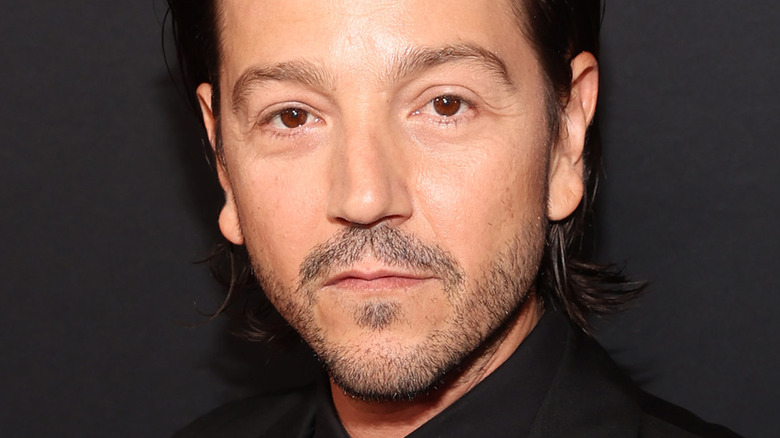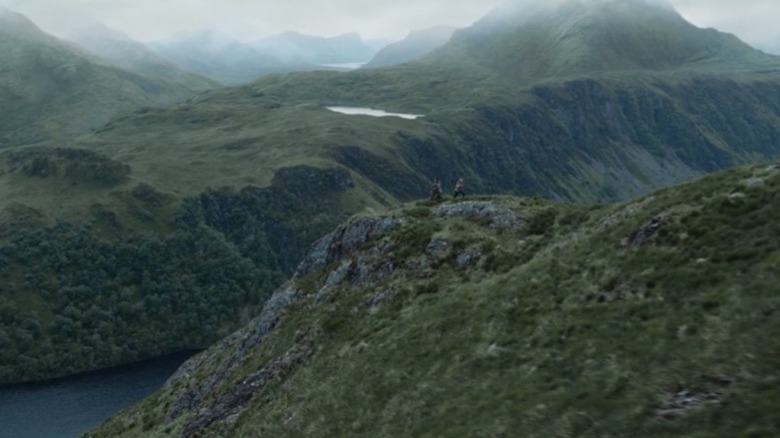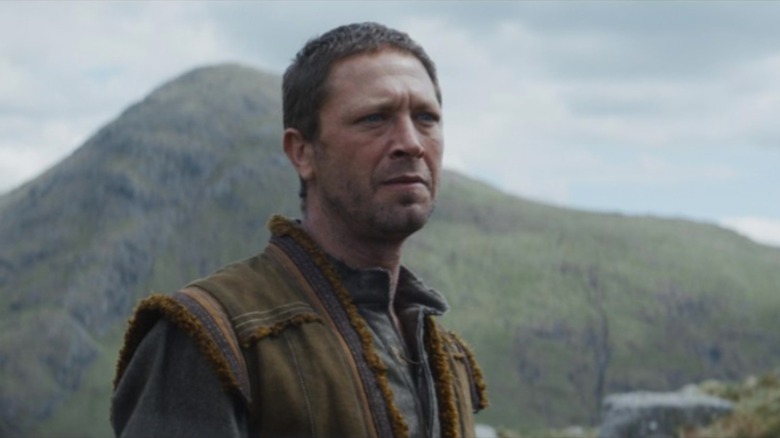Andor's Visuals Are Way Better Than Other Star Wars Shows Thanks To The Use Of Real Locations
It's been no secret that Tony Gilroy's "Andor" series is one of the best things going in the "Star Wars" universe right now, with its first batch of episodes leaving both critics and regular fans stunned by the gritty and mature take on Disney's galaxy far, far away. But one thing that people don't know about the Diego Luna-led prequel is the secret behind all of its amazing sets and visuals.
As seen throughout the first season, the incredible use of well-known locations like the "Capital of the Galaxy" Coruscant and new "Star Wars" environments such as Aldhani — the grass-covered planet where much of the show takes place — has been a major hit among viewers. Redditor u/TheKingGinger03, in an Episode 4 discussion thread, wrote: "These sets are really spectacular." Redditor u/Videowulff, describing Coruscant, said: "This felt like something we could actually visit. It looks real and FEELS real." Well, that's because the locations actually are real, and the secret behind them is basic "Star Wars" filmmaking at its core.
Andor's creative team chose to shoot on location in real places throughout Scotland and England
According to "Andor" creator Tony Gilroy, the visuals and locations we see throughout the Disney+ series are, for the most part, set in reality and filmed in actual places — like Scotland and England, per The Digital Fix. On-set shoots reportedly took place in the UK at Pinewood studios, just outside London.
When it came time to film certain scenes, Gilroy and his team utilized natural light and physical objects rather than CGI. The additional use of real backdrops and actual buildings was something that the "Andor" crew made sure to make prominent, especially during scenes on Aldhani and Ferrix, which were shot primarily along the coasts of Scotland and England, as well as locations in Perthshire, Essex, Dorset, and Derbyshire, among others (via Digital Fix). In fact, the Cruachan Power Station in Argyll and Bute reportedly served as a physical stand-in for the Imperial base on Aldhani, with Gilroy using a little bit of CGI to give it a more "Star Wars" look.
The "Andor" creator could have easily gone the route of "Mandalorian" and other Disney projects by using the Mickey Mouse company's well-known VFX technology The Volume, but instead, he chose to keep things simple and more practical, much like George Lucas did when making the original trilogy. As diehard fans know, many of the settings and sets we see in each of those first three "Star Wars" movies are real, like Tatooine, which was filmed in Tunisia. There's even an actual town in the North African country called Tataouine that is said to have served as the main source of inspiration for Lucas, who nearly launched a real-life war there with the making of "Star Wars: Episode IV – A New Hope."
In September 2022, Gilroy was asked in an interview by The Digital Fix to explain why he ultimately chose not to use Disney's Volume technology, and the reason he gave isn't what you think.
Andor is a show that works better without loads of CGI
According to Tony Gilroy, Disney's The Volume technology is something that works best with grandiose storytelling, "like Bond or something," the "Andor" creator said. And his show just isn't that.
"The Volume is an amazing development in filmmaking, and it's just going to get better and better and cheaper and easier to use," Gilroy admitted to The Digital Fix in September. "The problem with it is, you kind of have to make a choice about what kind of show you're going to make," he said. "Maybe a big movie like Bond or something can say, 'OK, we're going to do these three scenes on The Volume, and the rest we're going to do for real.' We didn't have that opportunity."
For those who don't know, The Volume is basically a combination of an actual set and curved LED screens, which display CGI backdrops and digitally-created environments. An actor will typically walk onto the set and immerse themselves into the scene through the use of a real-time engine that shifts perspective and light sources as the camera and/or actor moves (via Daily Dot/Cartoon Brew). It's been the preferred choice over greenscreen for quite some time now. However, for Gilroy's realistic and gritty take on "Star Wars," the Volume was ultimately something he had to do away with for "Andor."
"Our workflow is very much an either-or situation," Gilroy explained to Digital Fix. "The Volume means you do all the post-production work first, and then you shoot your plates and do everything on the stage and then you're done. For us, we go out and shoot, shoot, shoot, and then we add all the post after. It's not a good workflow mix, so there's no opportunity to do both; there's times we'd like to but you just can't."


